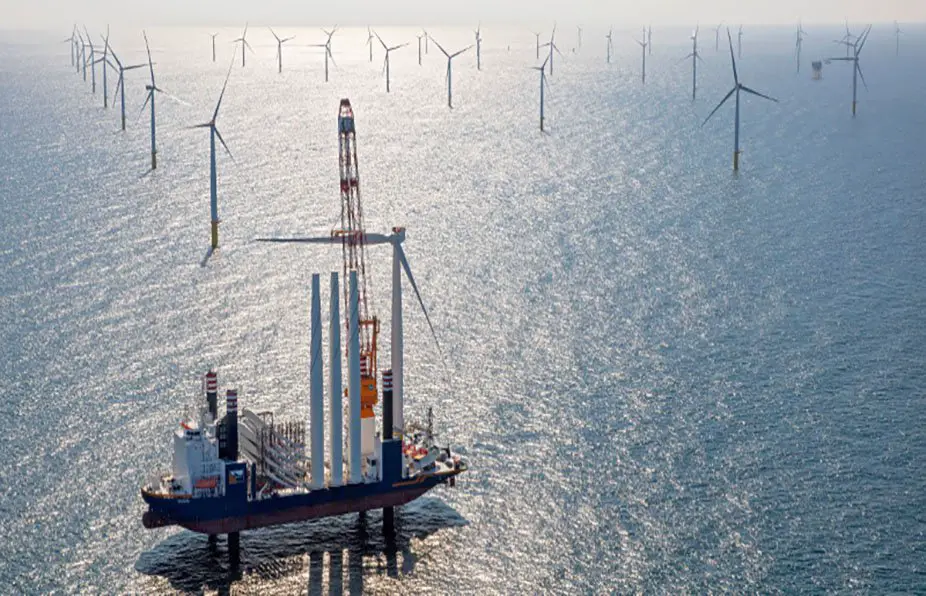Dogger Bank Wind Farm is an offshore wind farm being developed in three phases – Dogger Bank A, B and C. It is positioned between 130km and 190km off the North East shoreline of England at their closest distances.
The renewable energy landscape is continually evolving, with the Dogger Bank offshore wind farm emerging as a beacon of sustainable energy promise. Here are 10 intriguing facts about the Dogger Bank wind farm you might be unaware of.
1. Dogger Bank wind farm: Europe’s largest
The wind farm, when fully operational, is set to be the largest offshore wind farm in Europe. Each phase boasts an installed generation potential of 1.2GW, signifying a multi-billion pound commitment.
Together, their installed capacity reaches 3.6 GW, sufficient to supply energy to nearly 6 million households annually. Located off the northeastern coast of England in the North Sea, it represents the pinnacle of sustainable engineering in the region.
2. Dogger Bank is famous for?
While it’s gaining prominence for its wind farm, Dogger Bank has historical significance too. It is famous as a submerged prehistoric landmass that once connected the UK to mainland Europe. Palaeontologists have found ancient animal bones and tools, suggesting the area was inhabited during the Ice Age.
Furthermore, for hundreds of years, it has been a prominent fishing area. The abundance of food for fish leads to substantial catches of plaice, cod, haddock, turbot, dabs, and herring.
3. Dogger Bank depth: Ideal for wind turbines
One of the reasons the Dogger Bank was chosen for this massive project is its depth. With an average depth of 15 to 36 meters, it provides the perfect conditions for installing large-scale wind turbines. The bank also spans roughly 17,600 square kilometres (6,800 sq mi) and measures approximately 260 by 100 kilometres (160 by 60 mi) in size.
4. Who owns Dogger Bank?
Ownership of the Dogger Bank wind farm is shared. Equinor, SSE Renewables, and Eni share the responsibilities and stakes of the project. The joint venture is as follows:
- SSE Renewables (40%)
- Equinor (40%)
- Vårgrønn (20%).
5. Dogger Bank wind farm completion date
The wind farm will be completed in 2026. The progress of the wind farm is a testament to the dedication and commitment of its stakeholders. The project, divided into multiple phases, has seen significant advancements in recent years, with turbines being installed, infrastructure being set up, and energy generation targets being met progressively.
6. The significance of Dogger Bank North Sea
The North Sea, particularly the Dogger Bank region, is renowned for its windy conditions, making it an ideal location for offshore wind farms. The geographical location and wind patterns promise consistent energy generation throughout the year.
7. Dogger Bank wind farm cost
The overall commitment to the wind farm initiative is projected to be £9bn ($11bn). These three wind farms are designed to produce enough electricity for around 4.5 million UK households, fulfilling nearly 5% of the nation’s entire electricity needs.
Building the largest offshore wind farm comes with its set of financial challenges. While the Dogger Bank wind farm cost is substantial, the long-term benefits of sustainable energy production and carbon footprint reduction make it a worthwhile investment.
8. A boost for the local economy
The development of the Dogger Bank wind farm has substantially benefited the local economy. From job creation in sectors like construction, operations, and maintenance to fostering local businesses, the project has been a boon for the surrounding communities.
9. Innovative 13 MW and 14 MW wind turbine technology
The world stands on the cusp of a renewable energy revolution, and a prime example is the recent campaign to install 277 state-of-the-art wind turbines at the wind farm, poised to be the world’s largest offshore wind facility. These turbines, an incredible 260m tall — nearly double the height of the London Eye — harness the formidable power of GE Renewable Energy’s 13MW Haliade-X turbines, among the most potent and advanced globally.
The Dogger Bank Wind Farm occupies an expansive area almost equivalent to Greater London’s size, with its foundations deep in the seabed that historically linked the UK to Europe. Once operational, these turbines, along with the new 14MW models, will not only redefine the scale and efficiency of wind energy but will also power up to 6 million homes annually. This project, a collaboration between UK developer SSE Renewables, Norway’s Equinor, and Vårgrønn, encapsulates the ambitious strides being made towards a sustainable future.
10. The world’s first unmanned HVDC platform
It’s the inaugural unmanned HVDC platform manageable from a land-based site. Access to the platform is solely through a service operations vessel. Dogger Bank A’s wind turbines will feed the platform 1.2GW of alternating current, which will then be changed to direct current and sent onshore to a converter station in Beverley, East Riding.
The platform is equipped with HVDC converter technology that guarantees effective technology transmission with minimal losses. Provided by Hitachi Energy, this platform stands out as the UK’s first offshore wind farm to adopt this innovation.
READ ALSO: First Turbines Set Sail for the Massive Dogger Bank Offshore Wind Farm
Dogger Bank wind farm is not just a marvel of modern engineering but also a beacon of hope for sustainable energy enthusiasts worldwide. The intricate blend of history, technology, and sustainability makes it a project worth noting and celebrating.

